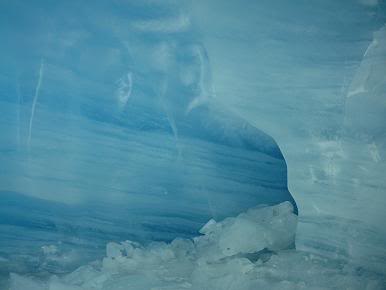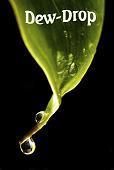PURE WATER FROM GLACIERS AND SNOW MELT
I can't imagine most of us having access to any glacier, but I wanted to cover this forgotten source of water because there is so little information available.
First, can you get clean water from a glacier? Absolutely! But, there is more to it than chipping out some ice and melting it in a pot. Since most glaciers are retreating (more ice lost than gained throughout the years), there is always fresh ice being exposed for us to reach. However, if you look at this ice mountain, you will see a lot of dirt and dust covering the ice sheet. The debris coating must be removed before you are able to access the clean ice underneath. Which brings up an obvious question. Is glacier ice clean? The answer is, sort of.
The fundamental cleanliness of the ice sheet is dependent on it's location and the amount of airborne dust that landed on it as the ice formed. For all intensive purposes, yes the ice is clean and suitable for drinking. Some more enterprising companies make money selling pure glacier water. Now they filter it before bottling, but it is a testament on the cleanliness of the water.
All water on Earth is recycled. Glacier water is typically thousands of years old. It is a humbling experience to drink this historical water. Some of it dates back to the time of ancient Egypt (BCE). Snow fell over 2,000 years ago, formed into a moving ice sheet and then you harvested it to drink.
To harvest the ice and make it into clean water you should do the following:
- Remove the exposed top layer of the ice sheet with any suitable tool - an adze or flat faced axe or garden grub hoe. You want to see translucent blue ice. If the section of ice you are working on was near the outside edge of the glacier it is possible the color of the ice will be clear or white.
- once the ice section is exposed - clean - you can begin to harvest ice. Using your chopping tool, simply start cutting away the clean fresh ice.
- collect this clean ice into a clean container.
- the amount of ice depends on your needs. Don't forget to allow for shrinkage loss (ice is bigger than the water it creates).
- the next step is to melt the ice. Puralist will only use normal ambient air temperature for melting, but for those of us that want to drink sooner rather than later, any appropriate heat source will do. Fire comes to mind. Use a metal pot such as stainless steel.
There are two different methods of melting.
1) Heat the ice just until it liquefies, no more.
2) Heat the ice water until it boils. This ensures that there will be no bacteria in the melted ice / water. This boiling also changes the flavor a small amount.
It is up to you to decide the method.
It is recommended that you filter the water. My preferred way is to use a coffee filter. This is crude filtering which only removes the larger particles and doesn't change the flavor of the water to any extent.
Please note there will be dust particles trapped with each layer of ice formed by each year's layer of snow. This dust is how climatologists and historians tell what was happening in the Earth's history.
The best ice will be IN the ice sheet. That is ice that has been contained and covered for many years. The deeper blue ice is snow that was compressed a long time ago and remains pristine for centuries. This will make the highest quality water as well as being quite rare.
If you want ice that last a long long time in drinks, nothing beats glacier ice. Highly compressed, kept frozen for many years. The ice that last an incredible amount of time.
Glaciers, natures sign post from the last ice age - mostly.

|



